⚡This is Equity Breakdown, where you will find short, no bullshit overviews of public companies! Join me in breaking down industries and companies that will become leaders embracing disruptive technologies and innovating change! Subscribe Now!
“The true currency of life is time…and we have all got a limited stock!” - Robert Harris
To all the Time Investors,
The race has just started in the commercial electric vehicle space and today we will breakdown, Arrival ($ARVL). The company is planning to become public through a reverse merger (SPAC) with CIIG Merger Group ($CIIC).
🔴Download Equity Breakdown Report
📖What is Arrival?
Arrival is aiming to revolutionize the electric vehicle industry with the production of commercial electric vans and buses. The company was founded in 2015 and personally funded by founder and CEO, Denis Sverdlov to transform the automotive industry. In stealth mode, the company patiently focused on amassing top tier human capital and building layers of intellectual properties across the manufacturing and services sections of the supply chain. Fundamentally, leadership is focused in creating an ecosystem that transforms the design, assembly, and scale distribution of the electric vehicle industry.
📈Market Opportunity
The share of electric vehicle sales is expanding from 2.7% to 58% by 2040. This movement is accelerated by the advancement of technology, unit-economics, climate change commitments from automakers, and rising government policy pressures.
Arrival has decided to focus its business strategy within the commercial vehicle space in the EV industry. This focus is driven by two key variables that are impacting commerce: the rise of e-commerce and the willingness of large fleet owners such as UPS, Amazon, or governments to reduce carbon emissions and adopt vehicle electrification.
Digital Commerce 360 has reported that e-commerce accounted for 21% of retail sales in 2020 and 37% by 2024, making vans a critical component. Additionally, logistic based companies, governments, and other corporations have put policies in place to transform their fleets and reduce carbon emissions. The U.S. government has confirmed that they will transition all their fleet to electric. Additionally, cost will play a critical role in the transition of these fleets.
Realizing these trends, Arrival has positioned itself with three key components to lead the commercial vehicle market.
New advanced manufacturing of EV vans and buses
Total cost of ownership
Top-Tier user experience and quality
Beyond the passenger vehicles race, the fastest tipping points will be in commercial vans and public transit such as buses. In the electric commercial vehicle market, Arrival believes the TAM is ~$70 billion for vans and ~$40 billion for buses. If you include fossil fuel commercial vehicles, the TAM expands to ~$280 billion for vans and $154 billion for buses.
👨💻What are the Strategic Resources?
Product Portfolio:
Arrival Van: Constructed from the ground up with 70% of the material intellectual property owned/controlled by the company.
Structural advantages: The company claims it is lighter, 80% better payload, and larger volume of packages. The model also enhances driver experience with space and in-house software
Economics: Total Cost of Ownership is ~$92k (~$0.25km/~$0.40miles) | 17% cheaper than comparable Diesel Van and 28% cheaper than OEM Electric Vehicle
Battery: Flexible battery pack configuration to adjust appropriate range required by the customer
Arrival Bus: Constructed from the ground up with 40% of the material intellectual property owned/controlled by the company.
Structural advantages: Lowest gross weight in its class (16 metric tons), At 8 metric tons weighs 40% less in unladen weight than competition leading to better range efficiency. Maintains the same passenger capacity as conventional buses but with greater user experience in terms of space, safety, security
Economics: Total Cost of Ownership is ~$396k (~$0.43km/~$0.70miles) | 47% cheaper than comparable Diesel Van and 50% cheaper than OEM Electric Vehicle
Battery: Flexible battery pack configuration to adjust appropriate range required for 35feet, 40 feet, 45 feet, and double-decker
Buses have completed ~1,000 km / ~620 miles of testing
Microfactory: The factory is built of a multitude of technology cells. In each cell, you have autonomous mobile robots that produce the electrical vehicle. The vehicle can move dynamically in any order through technology cells with software and autonomous robots. Each microfactory can adjust to build multiple vehicle types.
Structural advantages: ~20k sqm or ~215k sqft (11x smaller than traditional OEM factory) with 6 months expected construction timeline | no paint shop requirement | existing warehouse can be outfitted (no tesla-like gigafactories required)
Production Rate: 10,000 vans per year or 1,000 buses per year with 250 employees and two shifts
Economics: $45-$50M capital investment with $12 million in operating expense | 50% reduction in capex and opex costs relative to comparable OEM factory | low break-even point achieving $100M a year in gross margin per microfactory
Customer Advantage: Design flexibility for customers based on their local environment and close proximity to customers’ location.
Developing Resources:
Arrival prides itself on being a technology company first. The patent portfolio consists of 180 innovations filed in patent applications and 27 patents granted in the US as reported by IPqwery in Crunchbase. ~60% of the innovations are concentrated on composite materials, microfactory and design flow, robotics, and battery-related innovations. Key technology components in the ecosystem are:
Composite Materials: Sheet metals are replaced with proprietary materials that are lightweight and strong and used for internal/external body panels
Structural Advantages: The composite materials do not need metal stamping or painting.
Economics: 25x lower tooling costs and does not require frequent repairs and maintenance
Modular Components: DCDC modules, input-output modules, HMI modules, battery modules, and the drive control unit is designed internally, while safety systems are outsourced. The internal modules are the most important components regarding electrification. The company uses Tier 2 and Tier 3 suppliers to manufacture fill in components.
Structural Advantages: Components have had two years of road testing
Economics: Tier 1 supplier development costs are avoided resulting in 20% cost savings from suppliers
Production: New vehicle platforms can be developed in 18 months versus 3 years
Modular Skateboard: The platform creates flexible and automated microfactory assembly for the plug-in-play components.
Structural Advantages: Composed of aluminum structure for strength and can be used across multiple vehicle types
Economics: Extrusions, castings, composite panels, and adhesive joining processes reduce costs by eliminating high-wage specialist labor
Customer Advantage: The platform allows for different battery pack configurations can be adjusted based on needs
Software Architecture: The company has designed internal software, in-vehicle software, and customer-facing software.
Allow for control of automated robots, on the air modular component upgrades, and support functions in the microfactory
Allow for route planning, route status information, and access to vehicle data with API interface
Provide diagnostic tools to monitor vehicle performance and health. In the portal, you will be able to also schedule predictive maintenance.
Autonomous Technology: The company has acquired autonomous technology that it deploys through its Robocar vehicle in a racing environment.
Arrival is developing software with algorithms that drive the autonomous race car and hardware regarding the sensors and vehicle to create a closed-loop integration. The system can be deployed in racing and public street environment for the company’s vans and buses.
Research and Development Investments: In 2020 the company is projected to spend $25M and by 2024E $237M (20% of revenue). —>*Inside look into Arrival’s R&D
Customer Landscape + Partnerships:
The company has built some critical relationships to sell its core products and expand its footprint in the industry. The company’s relationships are defined in the following groups:
UPS: The customer has committed to purchase 10k vans from Arrival during 2021 to 2025. They have an opportunity to also purchase an additional 10k if needed. Arrival has worked with UPS since 2016 to ensure all cargo efficiency, improved driver experience, and a direct link to UPS systems through Arrival’s software
Arrival revealed in their F-4 report 16 customers have shown interest through letters of intent. Additionally, companies in the logistics, grocery, and e-commerce segments in the UK have sent intent of purchase for 3k vans and in discussions for additional 5k vehicles
Hyundai Motor Company and Kia Motors Corporation: This relationship will involve joint development of vehicles. HKMC will offer engineering talent and supply chain benefits in return for microfactories and software innovation benefits. The expiration of this venture is 2024. Apple has also entered the mix here to utilize Kia’s plant in the creation of their autonomous vehicle.
LG Chem, Ltd: The South Korean company is the number one producer of lithium-ion batteries in the world. The companies have built a long-term partnership.
Comau (Fiat Chrysler Automotive subsidiary): The company provides automation systems for factories and will initially support Arrival in their microfactory layouts.
Resource Deployment + Growth Strategies + Acquisitions:
The company intends to deploy its resources through the following business model and growth strategies:
Deployment Timeline:
Arrival has two microfactories. In South Carolina, the bus factory will begin operations in Q2 2021 and production in Q2 2022. In Bicester, UK the van factory will begin operations in Q1 2022 and production in Q3 2022. Additionally, the composite material lab has been set up and pilot line being installed to meet production schedule.
Business Model and growth strategies:
Arrival plans to use a direct sales model to target large fleet owners for their vans and buses. Currently, the company has not generated any revenue and has only produced prototypes for select customers. Beyond its deployment timeline the company has initiated the following projections regarding its product portfolio:
2024 E: Revenue: $14.1B | EBITDA less CapEx: $1.4B (~10%)
2024 Revenue Distribution: Van/Large Van: 66% | Bus: 22% | Small Vehicle: 12%
2024 Volume: Van/Large Van: 168k | Bus: 11k | Small Vehicle: 79k
2024 Margins: Bus: 38% | Large Van: 34% | Van: 21% | Small Vehicle Platform: 18%
The company believes its growth can be fueled by three additional key strategies:
31 microfactories are expected to be built by 2024
Modular skateboard platform will allow customization and the ability to quickly scale into new vehicle segments
Arrival plans to launch a small vehicle platform from 2023, composing about 12% of future revenue
Arrival’s vehicles have all the capabilities for autonomous driving
Emission credits issued by governments to accelerate zero-emission targets. These credits can be sold to other OEM’s an additional stream of revenue.
Strategic Acquisitions:
CIIG: SPAC merger led by Peter Cuneo, former CEO of Marvel Entertainment, resulting in Arrival’s total enterprise valuation of $5.4 billion
TRA Robotics for $1.8 million in 2018
Roborace Limited for $61.1 million euros in 2019 – robocar autonomous technology
💪Key Strategic Moats
Microfactory Production Deployment (Scale): Arrival is deploying the only microfactory concept in the production of EV. The platform contains in-house produced software, autonomous robots, and critical plug-in-play components
The microfactory achieves superior cost savings, smaller footprint, decentralized scalability, and rapid manufacturing
Product Composition (Technology): Arrival’s core products contain 40-70% in house IP that delivers superior products to the market
The proprietary composite materials, plug-in-play components, dynamic skateboard modular and in-vehicle software contribute to competitive unit economics, scalable designs, optimized energy efficiency, maximum performance, and low maintenance costs
Total Cost of Ownership (Unit Profitability): The technology and state-of-the-art manufacturing platform provide significant savings for customers. The savings span across the actual purchase of the vehicle, infrastructure cost, and maintenance costs. Across all three components, Arrival can achieve double-digit cost savings relative to traditional fossil fuel vans and buses. Additionally, the strategic resources the company deploys creates profitability at low production volumes
Tier-One Management: The company is led by the original founder who privately funded the operations initially with $26 million. The company’s workforce is composed of talented engineers across a variety of specialties ranging from material composition, software, mechanical, robotics and design.
⚠️Key Critical Risks
Competition: The company faces competition from traditional OEM’s and two comparable EV companies in the space.
Traditional OEMs. Majority of the fossil fuel van market is controlled by Ford, GM, and Fiat Chrysler. These companies have a massive footprint in terms of scale and have plans to introduce EV product line.
EV Companies: Rivian and Proterra are the company’s key competitors in terms of talent and product line. Rivian is private van/truck company that is hand in hand with Arrival when it comes to engineering talent, IP technology filings/granted, and critical partnerships. Amazon will launch 10,000 Rivian vans in 16 cities this year. Proterra is also another key player regarding buses. The company already has deployed and sold 1,000 EV buses.
Customer Concentration: Arrival partnership with UPS is the only source of projected revenue currently. Termination of the 10k vehicles will eliminate the $1.2 billion order backlog
Construction of Microfactory production model: The foundation in manufacturing, deploying, and servicing electric vehicles is strictly dependent on the microfactory concept. If this model fails implementation and execution within the proposed cost structures, then the company will be at high risk
Supply Chain Dependence: The battery is one of the most critical and expensive components for all EVs. Currently, Arrival is dependent on LG Chem Ltd for supply.
🧬Team DNA and Vision
Team Dynamics:
The leadership team is composed of ex-founders with unicorn companies on their resume, world-renowned experts, and talent from large OEMs and EV companies such as Tesla. Overall, Arrival has a dedicated team focused on research and development. As of 12/1/2020 the company had 1,456 employees with 500 software engineers and 500 mechanical engineers ensuring a 1:1 ratio. 85% of the workforce is dedicated to research and development.
Key Leaders:
Denis Sverdlov - Founder and CEO: Previous founder of $1.5B company and superior experience in managing distributed organizations
Avinash Rugoobur – President: Prior, lead strategy team to acquire Cruise +$1B for GM to compete in the AV industry
Mike Ableson - CEO Automotive: Prior, various leadership positions in GM ranging from vehicle development, engineering, and innovation
Tim Holbrow - CFO: Prior, strong finance leadership that lead to +$900M startup sales to Nokia. CFO experience in fintech, digital product consulting.
Rob Thompson - Lead for Materials: Global materials expert with 7+ books in manufacturing technology and experience in LG Electronics, Panasonic, and Nokia
Sergey Sulgin – CEO Solutions: Prior, founder of IT outsourcing provider that grew to ~6k engineers and 20 years of IT experience
Alex Kozyrev – CEO Mobility: Prior, launched one of Russia’s first internet banks and experience with machine learning and AI platforms
Vision:
I personally had the privilege to interview Arrival’s CFO Tim Holbrow to discuss the company’s vision and the key growth platform that positions Arrival to become a leader in the commercial EV space. Tim Holbrow summarized Arrival’s position relative to their EV peers emphasizing the disruptive play. “A key differential about Arrival is that it’s not just about building an electric van or bus, but more specifically reinventing the automotive industry, from the beginning to end of the process.” The company is a technology company that will use its microfactory platform to disrupt manufacturing and deliver exceptional products.
Microfactories are cheaper than traditional mega-factories, can be installed in existing warehouses across cities, and take up to six months to launch and begin production. As a result, Arrival will harness the demand of local communities to quickly supply the products at the most efficient level. This platform ensures cost savings, relevant product demand, and economically the best-predetermined pipelines for production. Ultimately, Tim highlighted that in the complexity of the technological inputs, Arrival has achieved a level of simplicity from design to manufacturing. They are positioned to disrupt traditional methods in the automobile industry and deliver exceptional results.
🤯Key Insights for Time Investors:
Demand for vans and buses is expected to rise substantially due to the rise of e-commerce and government climate change policies. Arrival is positioned to deliver products that minimize the total cost of ownership with superior technology that is proven and tested.
Microfactories are the companies most critical asset to ensure flexible, scalable, and local production of their commercial electric vehicles. The factories are 50% cheaper from a CAPEX and OPEX relative to traditional factories and can be installed in existing spaces, in local communities, and in under 6 months.
“You can build vehicles in New York with the unit economics of China,” Sverdlov says. – Forbes reporter
They have partnered with UPS from the beginning securing 10k vans and a $1.2 billion order backlog.
“There are a lot of startups with EV ideas. Unfortunately, we’ve not seen a lot of that materialize in terms of products that come to the market,” says Luke Wake, UPS’s international director of automotive engineering and advanced technology. “What helps set Arrival apart is the way that they were well funded to actually turn some of these ideas and visions into a reality.” – Forbes reporter
The company has 1.4k employees with 85% focused on research and development. They have secured talents across `1,000 engineers and have built a leadership team with top-tier talent in their respective fields
Investor Lineup:
~$1.2 billion investment and signed purchase agreement with UPS in 2020
~$150 million euros led by BlackRock in Nov 2020
~$100 million euros investment by Hyundai Motor Company and Kia Motors Corporation in Q4 2019
Post SPAC merger with CIIG, ~88% ownership will remain with existing Arrival shareholders
-Igli G. Laçi
If you like the content please make sure to share this newsletter, share this post, follow me on Twitter, and/or subscribe (if you have not already)!
Additional resources and sources I used for all the Time Investors (Leeeetttsss Gooooooo!!!)
TechCrunch | Arrival becomes latest electric vehicle startup to test the public markets with a SPAC
IndustryWeek | Why is UPS Betting on the Arrival of a New EV?
Changing the Traditional Automotive Industry Video
Disclaimer: The companies mentioned in my newsletter are not investment advice. This is simply information researched to help you learn about industries and various public companies




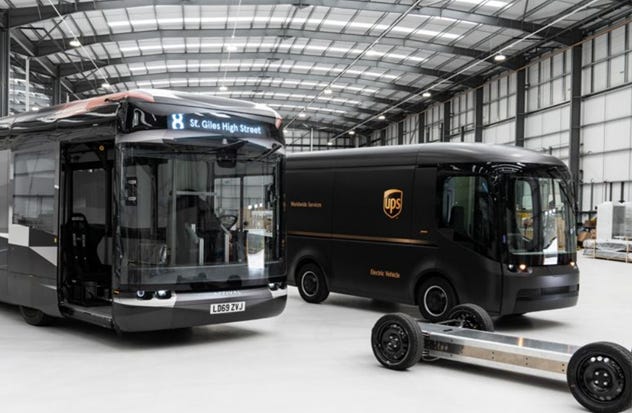
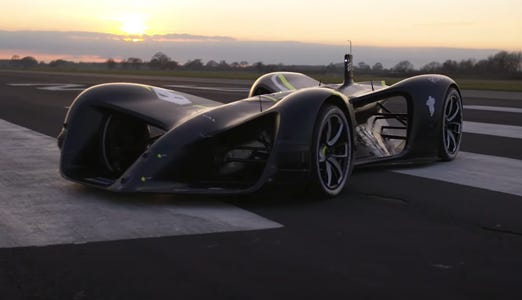






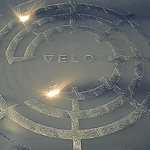
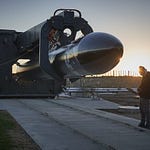

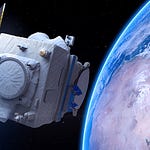
Arrival ($CIIC - $ARVL) Breakdown